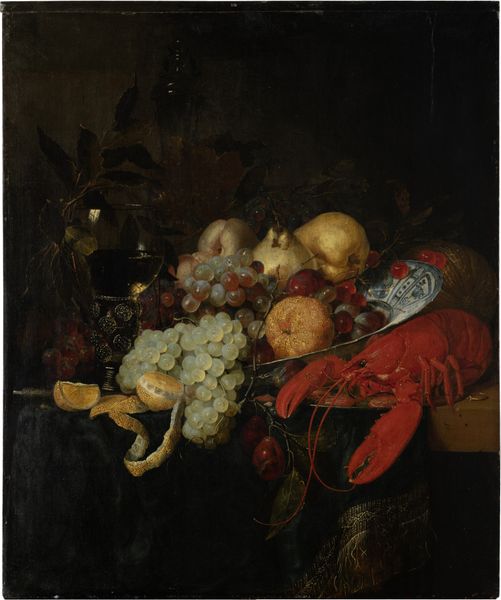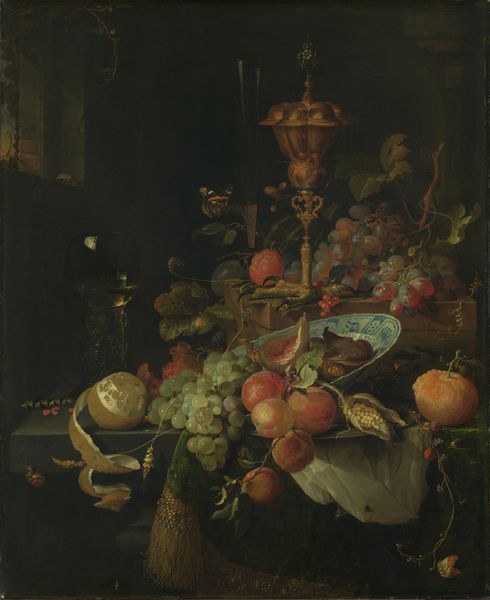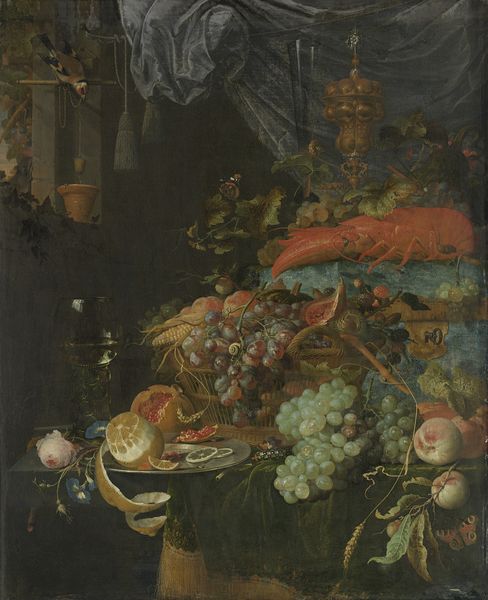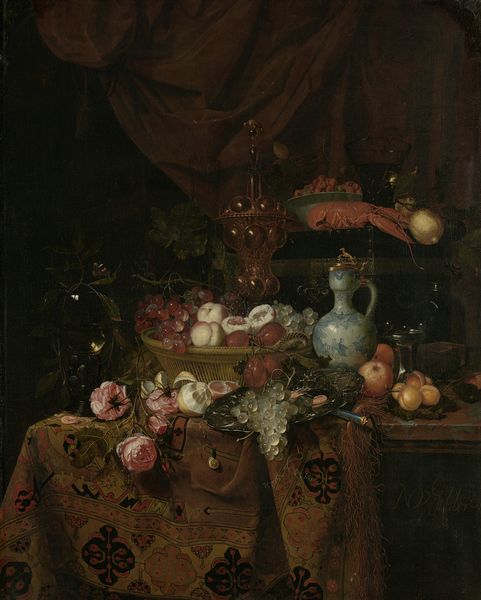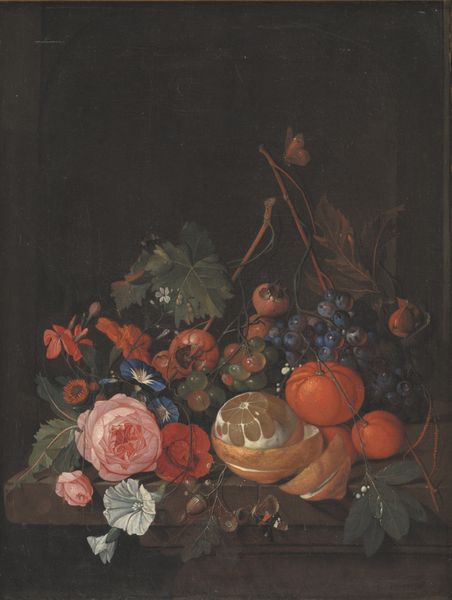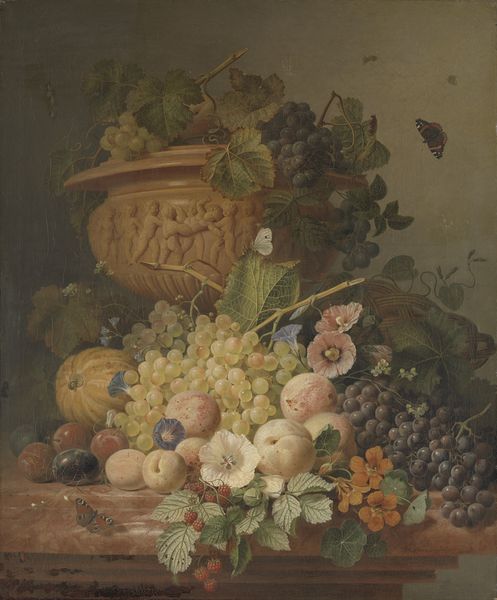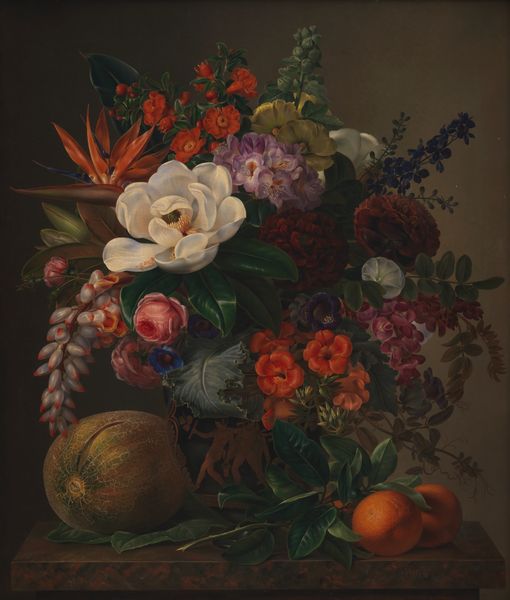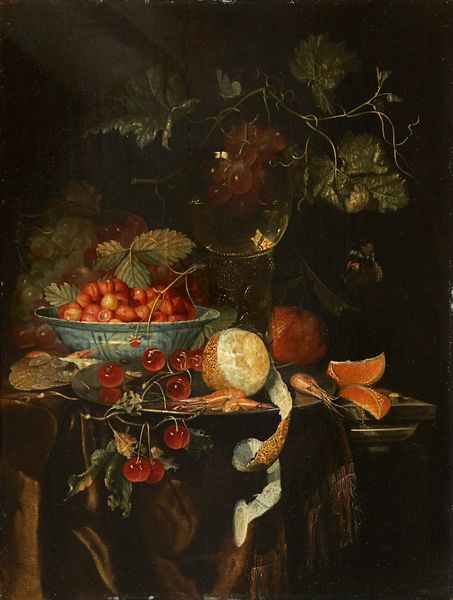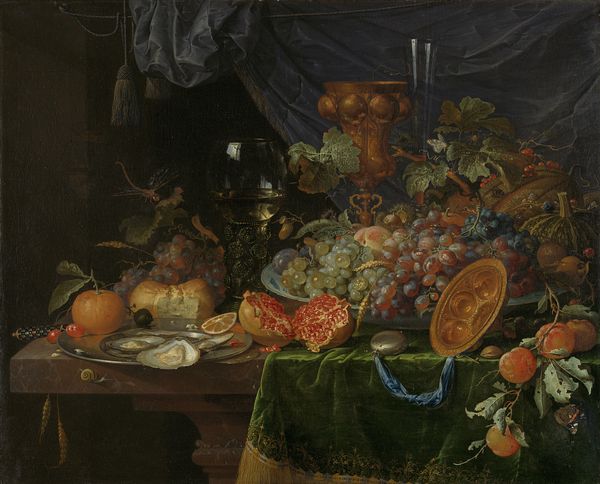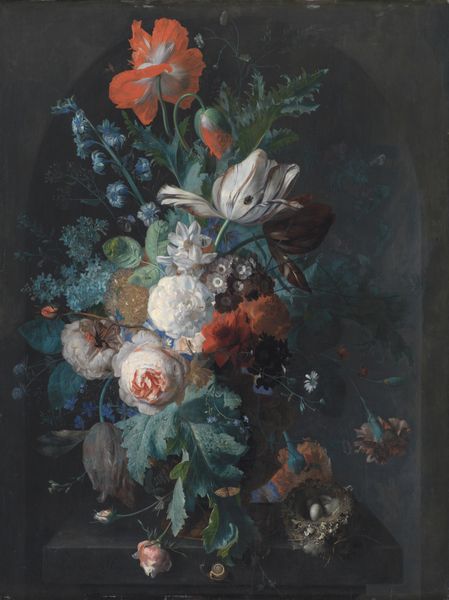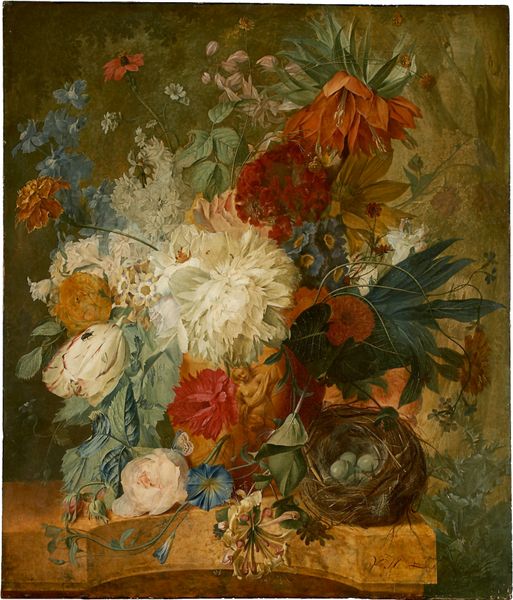
oil-paint
#
baroque
#
oil-paint
#
oil painting
#
fruit
Dimensions: height 70 cm, width 59 cm, depth 10.5 cm
Copyright: Rijks Museum: Open Domain
Jan Davidsz de Heem made this ‘Still Life with Fruit and a Lobster’ during the Dutch Golden Age. The painting, with its elaborate display of food, speaks to the prosperity of the Dutch Republic during the 17th century, fuelled by global trade and colonialism. The lobster, a luxury import, symbolizes wealth and status. The overflowing arrangement of fruits represents abundance and perhaps a subtle reminder of the transience of earthly pleasures. De Heem, working within the established genre of still life painting, both celebrated and perhaps critiqued the values of his society. Such displays of opulence were common among the merchant class, eager to flaunt their success. But it's important to consider the historical context. The Dutch East India Company, for example, played a significant role in the country’s economic power. To truly understand this painting, we might consult historical records of trade, studies of Dutch social customs, and analyses of the art market. By situating the artwork within its complex web of social and institutional relations, we gain a richer appreciation of its meaning.
Comments
No comments
Be the first to comment and join the conversation on the ultimate creative platform.
